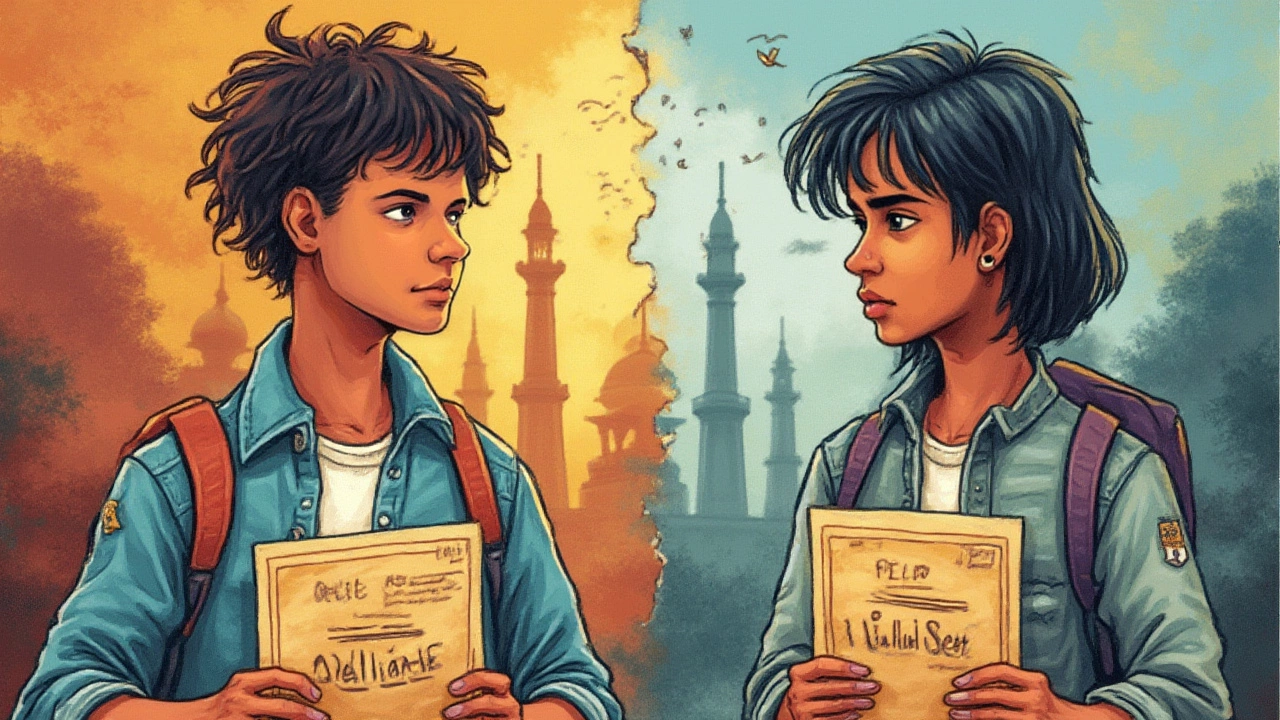Some students walk out of board exams in Delhi wondering, “Wait, did my cousin in Bengaluru just solve a question paper I never even saw?” Strange as it seems, students across India—sometimes even in the same year—are handed different versions of the CBSE paper, with Delhi famously getting its own separate ride. The rumors swirl every exam season: “Are Delhi papers easier?” “Is this about cheating?” Heads spin. Parents worry because a few marks can change everything: college admissions, scholarships, maybe even confidence for years.
How Delhi Ended Up With Its Own CBSE Exam Paper
The full story isn’t common knowledge, but the root cause is surprisingly practical. It’s all about security and logistics. Delhi is the original hub of the Central Board of Secondary Education (CBSE) headquarters, and, as you might guess, it’s also got the highest concentration of CBSE-affiliated schools: almost 1,900 in Delhi alone versus around 20,000 across the whole country.
This huge cluster used to mean exam centers were frequently closer together, and students often had overlapping friend circles. In the late 1990s and early 2000s, the CBSE faced a nightmare: exam paper leaks. Headlines splashed stories about question paper copies circulating before exams, and—no joke—old tuition teachers in Old Delhi and Laxmi Nagar could sometimes predict several questions in advance. New tech made communication even faster. The CBSE didn’t want to gamble with millions of students’ futures—or the credibility of the boards—so they started issuing a separate set for Delhi, and the rest of India got an ‘All India’ version. It’s an extra headache for CBSE authorities, but it made leaks within Delhi—where ‘paper out’ rumors were almost routine—much harder.
Even today, CBSE sometimes extends the difference: sometimes three sets—Delhi, All India, and ‘Foreign’ (for international schools)—all with similar difficulty, but with enough differences to sabotage mass leaks. If you wondered whether CBSE deliberately makes Delhi’s paper tougher or easier, data says no. In fact, a table of annual average mathematics scores shows little difference:
| Year | Delhi Average (%) | All India Average (%) |
|---|---|---|
| 2022 | 72.1 | 71.8 |
| 2023 | 74.3 | 74.2 |
| 2024 | 73.4 | 73.7 |
The numbers prove that difficulty stays pretty balanced—no one’s getting a secret advantage. This makes sense: Unfairness would spark nationwide outrage. If you actually look at the questions, they often test the same broad concepts, just reworded or with different values in sums. Sometimes, even teachers need a double-take before noticing which paper is which.

What Happens Inside the CBSE: Security, Controversy, and Planning
If you ever thought setting up a board paper was like printing worksheets, here’s a reality check. The CBSE appoints dozens of experienced teachers and subject experts to write question banks—a few thousand questions for every major subject. They split these into sets, mix up orders, swap values in math problems, sometimes even swap around diagrams or sources in social science questions. The goal? The same concepts, but enough surface difference to foil both cheaters and paper leaks. This is especially true in Delhi, where tight exam schedules and high population density raise the risk that news might travel fast between morning and afternoon exam batches.
There’s also legal and policy drama. At times, students and teachers in Delhi have complained they’re being unfairly targeted, or graded harsher, but checks every few years show marks falling within a similar range nationwide. In 2018, after a major leak, the CBSE even made all students nationwide re-take the Class 10 maths paper, which caused a flood of panic and angry parents demanding one uniform paper, arguing fairness and exposure. The CBSE stuck to its guns, backing up the split with stats, security needs, and logistics. Reforms since then included new security cameras at printing presses, armored trucks for paper delivery, sealed boxes, and digital tracking.
A practical angle many miss: Delhi gets its own paper not just for tradition, but simple math—fewer exam centers mean it’s easier to safeguard and deliver exam packages on short notice. It’s harder, for example, to coordinate identical distribution in far-flung villages, so the ‘All India’ version covers a bigger sprawl of unpredictable traffic jams, late trucks, or even floods blocking the way (yes, it’s happened). Teachers in Delhi also say, off record, this system keeps everyone a little more alert—you just can’t copy last year’s answer keys or depend on “tips” leaking from outside states. It keeps coaching centers honest. Most importantly, splitting paper sets keeps that crucial element: surprise.

What Should Students and Parents Know? Myths, Tips and the Real Deal With ‘Delhi vs All India’ Papers
There’s a myth that Delhi’s CBSE paper is either much harder, much easier, or cooked up just to stress students out. Here’s a straight answer: No, nobody gets a secret ‘easier’ paper. Data, teachers, and even my friends who’ve taught and marked in both sets say: Delhi papers might look different on the surface, but the skills and knowledge needed are identical. If you’re heading into the boards, that means focus on the basics. Cramming “Delhi-specific” solutions won’t help, but building real understanding will.
Students still need to watch out for practical tips. For starters, if you’re in Delhi and aiming high scores, don’t obsess over sneak previews or “the pattern changing this year.” Questions may be shuffled, or worded differently, but every bit of your syllabus is fair game. In recent years, teachers have also spotted a trend: both Delhi and All India papers are shifting toward application-based questions. These might test your ability to analyze a case study in economics, or apply a formula in physics, rather than just memorize it. You’ll want to practice with sample sets from both versions—many online sites post previous Delhi and All India papers for free. This lets you spot subtle differences, like phrasing, and helps dodge unwelcome surprises on exam day.
Parents too often stress themselves sick over “luck of the draw.” But with average marks so close (check the table above if you missed it!), you really don’t need to worry about paper versions. Instead, put energy into supporting a steady daily routine, healthy study breaks, and real understanding rather than rote memorizing. My own spouse, Ananya, grew up in Gujarat and was convinced before her CBSE exams that Delhi kids had a magical shortcut. After solving 10 Delhi set papers as practice, she realized—no hidden tricks. Her advice? Start mock exams early, take one Delhi set and one All India set, time yourself, and you’ll see: the difference is just in geography, not difficulty.
- If you get stuck, don’t guess which set will turn up—master the core concepts, because you’ll need them whichever version you face.
- Stay aware of the exam day logistics. Delhi centers ask for extra ID at entry, and bags may be searched more strictly. Plan your route, keep buffer time, and go light with only essential stationery.
- After exams, avoid panicking over WhatsApp groups comparing “hard” or “easy” papers. Relax, breathe, spend the evening outside.
Delhi’s different CBSE paper is about one thing: protecting your hard work against leaks and unfair play. While the system isn’t flawless—there’s still pressure, still nerves—it levels the playing field as much as possible in a country as sprawling and connected as India. So next time someone claims Delhi’s CBSE papers are a blessing or a curse, you’ll know: it’s just about keeping exams fair and square for everyone.

